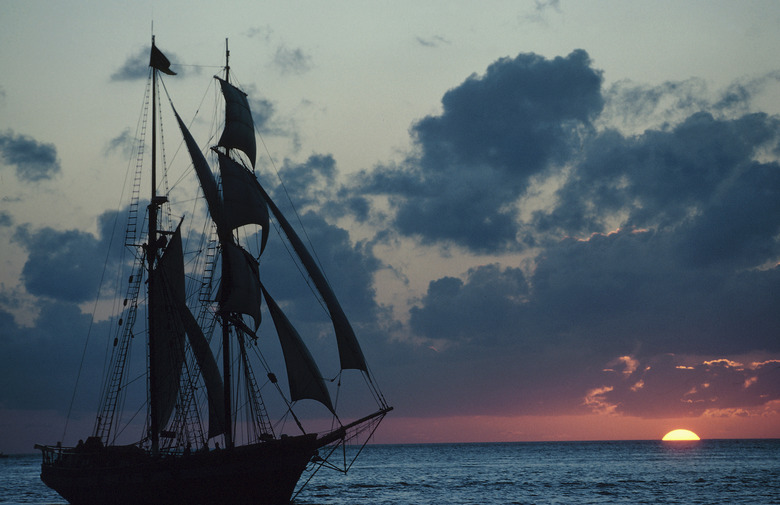What Are The Types Of Prevailing Winds?
Winds transport hot air, cold air, precipitation and even pollution across the world. Wind occurs due to the Sun's uneven heating of the Earth. This uneven heating pattern joins forces with the Coriolis effect to create a worldwide pattern of predominant winds that blow in fairly constant, steady directions. The term "prevailing winds" refers to this general global pattern of surface and upper-air winds.
Significance of Prevailing Winds
Significance of Prevailing Winds
Prevailing winds actually play an essential role in the Earth's heat distribution by ushering relatively warmer air to higher latitudes, and moving cooler air toward the equator. Prevailing winds tend to primarily blow either from the east or the west, depending on latitude. This is due to the Coriolis effect, which deflects air that would otherwise flow from north-to-south or south-to-north. The types of prevailing winds on Earth fall into one of three categories.
Trade Winds
Trade Winds
Occasionally known as the tropical easterlies, these winds generally blow from east to west between approximately zero and 30 degrees latitude. They bend slightly toward the equator; that is, in the Northern Hemisphere, they commonly blow from the northeast to the southwest, and in the Southern Hemisphere, they blow from the southeast to the northwest. Although there are exceptions, the trade winds are typically predictable and reliable; colonial mariners counted on them to propel their shipping vessels. The trade winds also help drive ocean currents in the tropics.
Mid-Latitude Westerlies
Mid-Latitude Westerlies
Sometimes known as the prevailing westerlies or just the westerlies, these winds blow in a general west-to-east direction from about 30 to 60 degrees latitude. The westerlies tend to be less reliable and more variable than the trade winds. The strongest prevailing westerly winds on the planet blow through a zone called the Roaring Forties, located in the Southern Hemisphere between 40 and 50 degrees latitude. Like the trade winds, the westerlies drive ocean currents and were relied upon by the seafarers of ages past, particularly in the Southern Hemisphere.
Polar Easterlies
Polar Easterlies
The polar easterlies are named as such because they are the type of prevailing winds closest to the North and South poles. The polar easterlies mainly blow from east to west between 60 and 90 degrees latitude. However, they are often slightly offset to blow toward the northwest in the Southern Hemisphere and the southwest in the Northern Hemisphere. The air accompanying the polar easterlies is cold and largely dry, particularly during the wintertime.
References
- National Geographic Encyclopedia: Wind
- Boise State: Lesson 5 Global Winds
- University of Tennessee at Knoxville: Consequences of Rotation for Weather
- University of Illinois: Global Wind Patterns
- National Library of Australia South Seas Companion: Atlantic Trade Winds and Currents
- The Discovery Channel: What Are The Prevailing Westerlies?
Cite This Article
MLA
Harris, Amy. "What Are The Types Of Prevailing Winds?" sciencing.com, https://www.sciencing.com/types-prevailing-winds-12325257/. 17 September 2018.
APA
Harris, Amy. (2018, September 17). What Are The Types Of Prevailing Winds?. sciencing.com. Retrieved from https://www.sciencing.com/types-prevailing-winds-12325257/
Chicago
Harris, Amy. What Are The Types Of Prevailing Winds? last modified March 24, 2022. https://www.sciencing.com/types-prevailing-winds-12325257/
